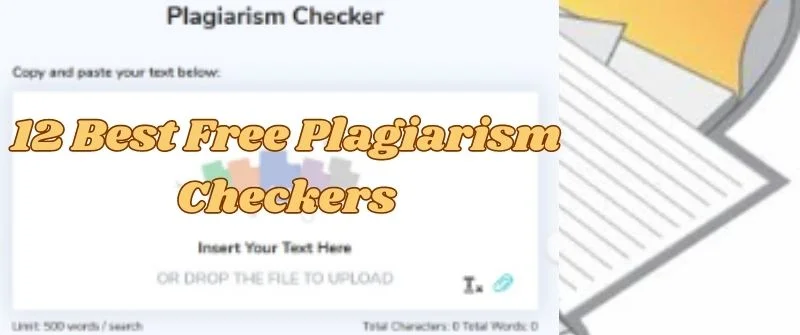Plagiarism is a great offense in academic writing and can result in severe consequences for students. Students need to use plagiarism checkers before submitting their work to avoid unintentional plagiarism.
Fortunately, there are many free plagiarism checkers available online that students can use to check their work for any potential instances of plagiarism. In this article, we will give an overview of 12 free plagiarism checkers that are specifically designed for students.
Importance of Students Checking for Plagiarism
Students should check for plagiarism since it can help them avoid accidental plagiarism, which can have detrimental effects on their academic achievement and integrity.
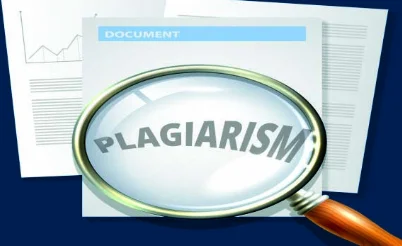
Students can improve the quality of their work and strengthen their writing skills by using plagiarism checkers to make sure that their work is original and correctly referenced.
Here is why checking for plagiarism is important:
Academic Integrity
Academic integrity is fundamental to learning, and plagiarism undermines this principle.
When students check for plagiarism, they ensure that they submit their original work and that their academic achievements reflect their abilities and efforts.
Ethical Responsibility
Students have an ethical responsibility to respect the intellectual property of others. Students avoid inadvertently stealing someone else’s work and violating their ethical responsibilities by checking for plagiarism.
Legal and Professional Consequences
Plagiarism can have legal and professional consequences. In some cases, plagiarism can lead to lawsuits, loss of credibility, or termination of employment.
Students avoid these severe consequences by checking for plagiarism and protecting their reputations.
Learning Experience
Checking for plagiarism can be a learning experience for students. It helps them understand the importance of proper citation and attribution and how to conduct research ethically.
These skills are valuable in their academic and professional careers.
Benefits of Using Plagiarism Checkers
1. Promotes Writing Skills
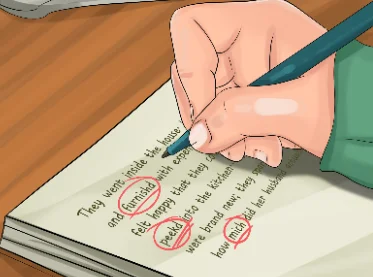
Students can gain from plagiarism checkers in various ways, including by improving their writing abilities.
Students can acquire greater writing skills by learning how to paraphrase. However, poor paraphrasing is cheating and copying.
Therefore, proper referencing is needed to acknowledge sources by pointing out instances of plagiarism.
2. Gives Feedback on Grammar, like Turnitin
Plagiarism checkers like Turnitin provide feedback on grammar and writing style.
This feedback can help students improve their writing skills and produce high-quality, error-free academic papers.
3. Highlights places to Remove Plagiarism
Plagiarism checkers highlight the areas of a student’s work where plagiarism has occurred, making it easier for them to find and delete copied material.
This can assist in preventing unintended plagiarism and save students time and effort by ensuring their work is original. If you do not do this, you may be deemed unacceptable because plagiarism is termed cheating, which is very common.
4. Saves Time Writing
By assisting them in spotting potential plagiarism early in the writing process, plagiarism checkers can help students save time.
This can assist in avoiding the need for lengthy changes in the future and guarantee that the work is original, allowing students to concentrate on other parts of their assignments.
5. Avoids being Caught Plagiarizing
Since plagiarism checkers can spot instances where students may have unintentionally utilized someone else’s work without giving proper credit, using them can help students avoid being found out for accidental plagiarism.
Students may make sure their work is original and avoid the serious repercussions of plagiarism by using a plagiarism checker.
12 Free Plagiarism Checkers for Students
1. Grammarly
The well-known writing tool Grammarly checks for spelling and grammar mistakes and plagiarism. The free program offers comprehensive feedback on writing style, grammar, and plagiarism and is free to use.

2. Quetext
Quetext uses advanced algorithms to find plagiarism. The tool offers thorough reports on the percentage of plagiarized text and points out instances of possible plagiarism.
3. Small SEO Tools
A well-liked and cost-free plagiarism detector is SmallSEOTools.
The program delivers thorough reports on plagiarized content and points out possible instances of plagiarism. Grammar and spelling checkers are among the additional features that SmallSEOTools provides.
4. PaperRater
A free online application called PaperRater checks for grammatical and spelling mistakes and plagiarism. The program includes recommendations for enhancing writing style and structure and detailed reports on the text that has been plagiarized.
5. Plagiarisma
Multiple languages and file types are supported by the free plagiarism detector Plagiarisma. The program delivers thorough reports on plagiarized content and points out possible instances of plagiarism.
6. Duplichecker
Duplichecker is a free internet application that detects plagiarism and generates thorough reports on content that has been copied. The tool has a variety of other capabilities, including a grammar checker and a paraphrasing tool, and supports many different file types.
7. PlagScan
A free plagiarism detector, PlagScan, offers thorough reports on work that have been plagiarized. This application is perfect for students dealing with a variety of documents kinds because it is simple to use and supports different file formats.
8. CopyLeaks
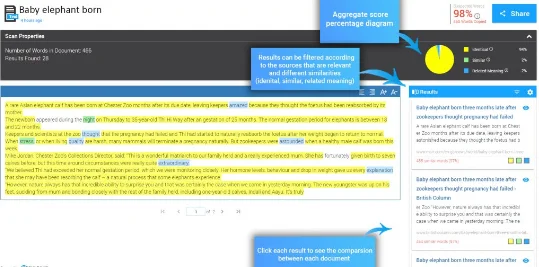
A free plagiarism checker, CopyLeaks offers extensive reports on copied material and supports a wide range of file types.
Other tools, such as a citation generator and paraphrasing tool, are now readily available.
9. PlagTracker
PlagTracker, a free web program, finds plagiarism and gives in-depth reports on duplicated text.
Other tools, including a grammar checker and a citation generator, are now readily available.
10. PlagiarismChecker.co
A free plagiarism detector, PlagiarismChecker.co, offers thorough reports on the text that has been plagiarized.
The tool has a variety of other capabilities, including a grammar checker and a paraphrasing tool, and supports many different file types.
11. BibMe
BibMe is a free online tool that not only checks for plagiarism but also generates citations in a range of styles. The tool is easy to use and provides detailed reports on plagiarized content.
12. PlagiarismCheck.org
Free plagiarism detection tool PlagiarismCheck.org offers thorough reports on work that have been plagiarized. The application contains a variety of other capabilities, including a citation generator and a paraphrasing tool, and supports several different file types.
How to Use Plagiarism Checkers Effectively
1. Upload the Essay in the right file format
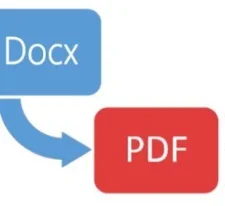
Students should ensure they upload their essays in the appropriate file format to use plagiarism checkers efficiently.
Most plagiarism detectors work with various file types, such as PDF, DOC, DOCX, and TXT.
Before uploading their paper to the plagiarism detector, students should decide which file format is best for their work and ensure it is stored in that format.
The plagiarism checker can assess the material accurately and produce more trustworthy findings if the file is uploaded in the right file format.
2. Understand the Similarity Report
A percentage of similarity is usually provided along with the highlighted passages of the text that are similar to those in other sources. Students should carefully read the report, concentrating on the passages noted as being similar and ensuring that the proper citations have been utilized.
Learners should also look over the report for any false positives that can show up if standard words or phrases are marked as plagiarized.
Students who comprehend the similarity report can enhance their work and avoid unintended plagiarism.
3. Cite and Paraphrase
Plagiarism detection software can spot overlaps between the student’s work and previously published materials, even those that have been paraphrased. Students should be conversant with proper citation styles and make sure that any sources they use are properly cited.
To minimize unintentional plagiarism, students should also try paraphrasing content rather than copying it verbatim from a source.
4. Try Using Multiple Plagiarism Checkers
Different plagiarism detectors may employ different algorithms and flag particular sources or passages of the text as similar.
If well used, scanners can help students stop copy-pasting and so improve their work quality and uncover potential plagiarism issues using several checks.
Additionally, having multiple checkers can help students avoid false positives by cross-checking any similarities reported by one checker against the results from another.
5. Get the Feedback
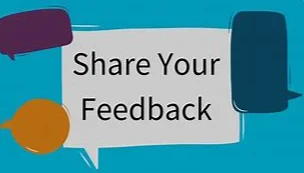
Numerous plagiarism detectors offer thorough reports noting potential problems with the student’s work and offering corrections.
Reviewing these reports thoroughly will help students improve their writing and avoid plagiarism in the future.
Students can also ask their lecturers or peers for feedback, who can point out potential problems and make ideas for development.
6. Make Necessary Corrections
Students should make necessary corrections based on the feedback provided by the tool. This includes properly citing any sources used in their work, paraphrasing where necessary, and resolving potential plagiarism issues.
Students should also review their work carefully to identify other areas that require improvements, such as grammar, spelling, or organization.
Making necessary corrections can improve the quality of the student’s work and help to avoid issues with plagiarism in the future.
Other Alternatives to Check for Plagiarism
There are additional methods that students can use to check for plagiarism without utilizing plagiarism checkers.
A manual search using search engines like Google or Bing is one possibility. Students can perform a search for specific words or phrases from their writing to check if they appear in other online sources.
This can take some time, but it can help you find potential plagiarism problems that a plagiarism checker might miss.
Utilizing citation management systems like Mendeley or Zotero is an additional choice that can assist students in properly citing sources and avoiding plagiarism problems.
Students can quickly import sources and produce citations in various formats using these tools.
Finally, students should ask their lecturers or peers for feedback. They can help spot potential plagiarism problems and offer suggestions for improvement.
This can be useful for enhancing writing abilities and preventing future plagiarism problems.
